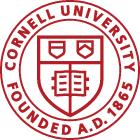The Field of Computer Science is intended for students who are primarily interested in the general aspects of computational processes, both theoretical and practical. Areas of research in the field include algorithms, architecture, artificial intelligence, computer vision, computational biology, concurrency and distributed computing, database systems, machine learning, machine vision, natural language processing, networks, numerical analysis, programming environments, programming languages and methodology, robotics, and theory of computation. The Cornell Ph.D. program in computer science is consistently ranked among the top six departments in the country, with world-class research covering all of computer science. Our computer science program is distinguished by the excellence of the faculty, by a long tradition of pioneering research, and by the breadth of its Ph.D. program. Faculty and Ph.D. students are located both in Ithaca and in New York City at the Cornell Tech campus. The Field of Computer Science also includes faculty members from other departments (Electrical Engineering, Information Science, Applied Math, Mathematics, Operations Research and Industrial Engineering, Mechanical and Aerospace Engineering, Computational Biology, and Architecture) who can supervise a student's Ph.D. thesis research in computer science.
Cornell is a leader in computer graphics, an interdisciplinary area that draws on many specialties including algorithms, physics, computation, psychology, computer vision, and architecture. The Cornell graphics tradition has roots going back to the earliest days of the field, when the Program of Computer Graphics (PCG) was established in 1974 and went on to make breakthrough contributions in areas including light reflection models, physics-based rendering, and visual perception for graphics. Today graphics research at Cornell flows across boundaries to cover a broad area of graphics and related topics, with research in graphics and vision in the Computer Science department, research in rendering and architecture in PCG, and research in human-computer interfaces in the Information Science program, all densely interconnected.






